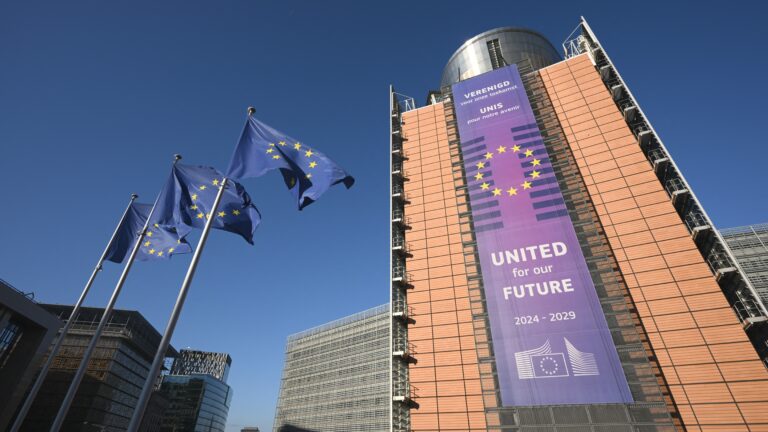President Trump’s net approval currently stands at negative 6.5 points in the RealClearPolitics polling aggregate. At the beginning of his second, non-consecutive term, he started with a plus 6.2 net approval, which first dipped into the negative on 13 March.
One may have even come across some headlines touting that President Trump has the lowest approval rating of any presidential term’s first 100 days in 80 years. So, the question arises: are President Trump and the Republican Party in trouble?
Well, if you are someone who has been following American politics since at least 2016, you most likely can answer that question: probably not. Donald Trump has been consistently and heavily underpolled throughout his entire political career, and that is most likely by design.
Journalists, pundits, and pollsters seemed to have gotten very quickly over the fact that the person whom they said had no chance of becoming President was, in fact, President during Trump’s first term. So, just as soon as he took office, he got hit with approval ratings double digits in the negative, while a significant portion of news segments started with ‘a bombshell’ about the incumbent administration, followed by either ‘the walls are closing in’ or ‘is this the beginning of the end’ in reference to President Trump.
Trump Bombshell Montage – Walls Are Closing In (no collusion)
Uploaded by Wired4Fun on 2019-03-25.
Even polling firms as prestigious and with such a great track record as Gallup routinely put out approval ratings in the 35–39 per cent range for President Trump, even in years when the economy was booming and the Dow returned over 20 per cent, in 2017 and 2019. Then, the election year of 2020 came around, along with the COVID-19 pandemic. When the initial lockdowns were announced in March, the Dow dropped 15 per cent in one month. With a multi-trillion-dollar stimulus package, the premier stock index managed to end the year with a 7.25-per-cent gain—however, a lot of that came from after the announcement of the successful vaccine development, which was after the 2020 election was called. What’s more, the murder of George Floyd by police officer Derek Chauvin in May prompted mass riots across the country.
Still, in that environment—amidst a pandemic, a consequent recession, and mass riots—President Trump got 46.9 per cent of the popular vote, and the election took five days to call due to the extremely close results in crucial swing states. For reference, President Trump’s approval rating in the RCP average only reached his eventual popular vote share once. Ironically, it was in April 2020, in the middle of the initial COVID lockdown.
We’ve also been hearing that pollsters have adjusted to the Trump phenomenon since their disastrous performance in the 2016 election. The odd truth is, in terms of the national popular vote, 2016 was actually the most accurate election for the pollsters.
Then, the RCP aggregate only underestimated President Trump by 1.1 points nationally (Clinton led by 3.2 on election day, she ended up winning by 2.1 but lost the Electoral College). In 2020 they missed him by 2.7 points, and in 2024 by 1.6 points (again, citing the RCP average on election day).
‘The odd truth is, in terms of the national popular vote, 2016 was actually the most accurate election for the pollsters’
The polling industry as a whole was ‘allowed’ to publish very damaging numbers about President Biden against President Trump leading up to his withdrawal from the race in July 2024. However, once Kamala Harris became the presumptive nominee in August, she was leading national polling until late October, then narrowly took it back ahead of the election. In the end, President Trump ended up winning the popular vote by 1.48 points.
Rasmussen Reports, one of the few right-leaning pollsters in the industry who had President Trump consistently up throughout that period, astutely pointed that out in a tweet.
Rasmussen Reports on X (formerly Twitter): “”Surveys from CNN, CBS, ABC and the Washington Post, NBC and the New York Times” … can all be safely ignored.Accept no substitute for accuracy in polling.None of these have explained this or apologized … https://t.co/34k7NGPkBm pic.twitter.com/IDqf3Zjk5R / X”
“Surveys from CNN, CBS, ABC and the Washington Post, NBC and the New York Times” … can all be safely ignored.Accept no substitute for accuracy in polling.None of these have explained this or apologized … https://t.co/34k7NGPkBm pic.twitter.com/IDqf3Zjk5R
People like to point to the 2022 midterm election as an example of the polling industry underestimating the Democrats, as opposed to the Republicans, in the surveys. And, to be fair, that does hold some water—although it is not a completely waterproof argument.
In 2022 Republicans were actually underestimated nationally. They won the Congressional generic ballot by 2.8 points, and the RCP average showed them up by 2.5 points. As late as mid-September, Democrats were leading the generic ballot polling as well. However, state polls in key Senate and governors’ races did overestimate Republican support at the time, and President Biden’s net approval of around negative 12 points in his first term also suggested a stronger Republican performance in the midterms.
The consistent inaccuracies of national polling have already claimed a victim: FiveThirtyEight, the other popular polling aggregator besides RealClearPolitics, was shut down in March 2025. They were constantly behind RCP in accuracy, and always in the direction of the Democrats. As their last act of defiance, they weighted their polling aggregate to show President Trump’s approval rating in the negative a few days before their shutdown.
So, any reasonable observer would expect President Trump to be underpolled nationally. To what degree is the only question.
However, that does not mean that his first 100 days did not have any turbulence that could give Republicans reasonable concerns. His abruptly announced tariffs on around 90 countries sent the stock market into a nosedive, with the Dow being down 13 per cent year-to-date at one point. However, due to the 90-day tariff pause and the advanced trade negotiations with India, it has recovered significantly since, and is only down 2.54 points before market open on 5 May.
Not that mainstream pollsters could be eager to argue a close correlation between stock market performance and national support for a candidate. When Kamala Harris became the presumptive nominee of the incumbent Democratic Party in early August, the Dow Jones took an unexpected 5.2-per-cent loss in just a few days. That did not stop these mainstream pollsters from showing Hariss surging nationally…
So, the stock index performance is also not a foolproof metric to measure the success of an administration. However, in the case of President Trump, it is a hell of a lot better than the approval rating by discredited mainstream pollsters.
Related articles:







